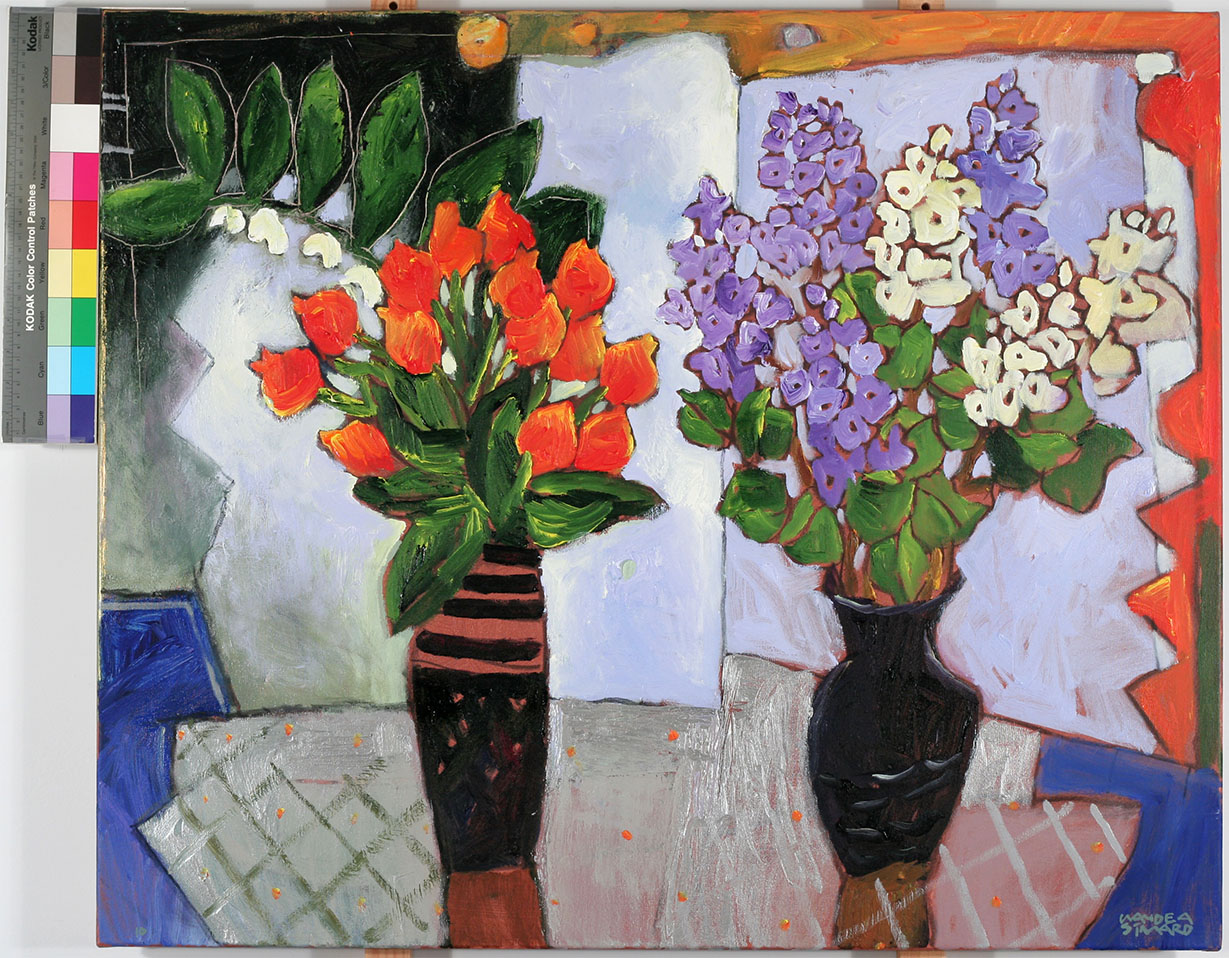“Every day, I try to capture love in images” Claude A Simard
“The painting of Claude A. Simard, a multifaceted creator who has managed to render beauty, from a pictorial point of view… insightful!
Over time, his approach changes, his spirit, itself, remains the same from beginning to end. And what is this peculiar spirit that constitutes the soul of his paintings? His glance at beauty. A beauty that he expresses in scenes of everyday life. A glance constantly in pursuit of significance in the ordinary of life. He invariably lies in wait for the turning point, of what makes a space, a form, a whole effective, aesthetically dynamic. And this is achieved through thoughtful and rigorous compositions. Claude A. Simard excels in the management of his pictorial space. This dimension is in fact present as early as his first abstract paintings and will remain omnipresent throughout his career.”
Translated from: Robert Bernier, Revue Parcours Janvier/février 2016
“The catalyst for his pictorial awakening coincides with the couple’s first trip to Holland in the spring of 1986. Claude A. Simard experiences on his return from the Netherlands a true… chromatic shock! He writes in one of his notebooks on May 14, 1986 : “Back from Holland. Splendid trip full of colours. Since our return, I paint canvases as crazy as the Dutch landscape. Today, I painted a large painting of tulips. The colour surprises me. Huguette says to me that it is very good. I am hesitant in front of all this colour that I sweat a bit in spite of myself. As though I had kept a piece of Holland in me. This country must be seen only in spring. The eye experiences an enjoyment which I have never felt anywhere else, as if tubes of red, yellow, purple, pink had been dropped on the green and matt landscape. What a great pleasure. It is this joy that I try to paint.”
“From then on, the colour explodes with the complicity of abundant matter.”
Claude A. Simard’s artworks are joyful, serene and filled with life-giving light. Their pictorial quality is undeniable. Simard’s signature esthetic is easily recognizable, regardless of the subject of the painting.
View a demonstration of Simard’s composition planning
Tableau « Au mois de mai si doux » 2010


Discover the pictorial approach activating the cursor
“I plan some of this. And some of it happens as a consequence of the primary planning. The dominant elements of this painting are two structural triangles (drawn in blue in picture below) and one opposing triangle (drawn in white). As you can see in the diagram below, the green dot at the meeting of the two opposing triangles is not an accident. In the contrary, it is an essential design element of the painting. Remove it and the structure perception is destroyed. The whole abstract quality of this work depends on this element.
I find it very interesting that your client focused on this one element. It certainly indicates a great sensibility on his/her part that is not often found in the general public. Maybe this person is an artist or knows a lot about art. I am a little surprised he/she did not decode the element as essential to the triangular components of this composition. Sometimes those “tension” points of a painting take time to perceive. But when you have found them, they remain on your mind forever.
Hope this helps you understand my “cheminement” in the creation of this panting and of other works. I have posted a demonstration if this very subject of structure development on YouTube to help a teacher from Calgary explain its importance to her students.”
Text by Claude A. Simard
Drawings
Drawing has always been a necessity, a vital need for Claude A. Simard, ever since he was a boy. It is his way of commenting on the world. He tells the story of whatever he sees, whatever is within reach.
His logbooks are like journals used to record his observations and capture moments in time. His sketches are different from his paintings, revealing another side of the artist. The act of drawing nourishes his inner journalist, committed to reporting on day-to-day life.
